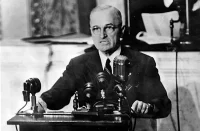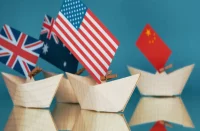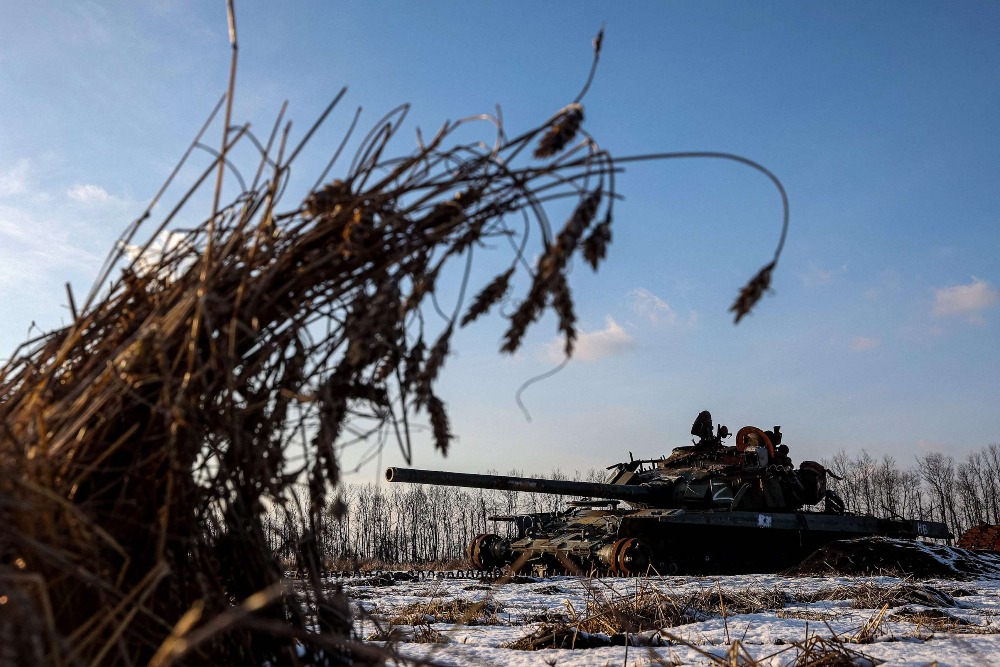Why does the United States need an empire?
Historian Niall Ferguson states that the majority of modern-day academics see an entirely appropriate parallel between the “imperial rule” of the USA and the British Empire as it was 100 years ago.[1] Joseph Nye, meanwhile, believes that “not since Rome has one nation loomed so large above the others… Respected analysts on both the left and the right are beginning to refer to “American empire” approvingly as the dominant narrative of the twenty-first century.”[2]
The United States has been moving towards this position over the whole of the 20th century. In the mid-1960s, diplomat and academic Ronald Steel wrote in his book “Pax Americana”: “In the eyes of much of the world, America is a nation possessed of an empire of nominally independent client states and pursuing ambitions consistent with those of a great imperial power”. [3] Steel’s main thesis, however, is that the USA is an “accidental empire”. The country’s intentions and actions abroad are allegedly always of an altruistic nature and they have turned into an empire “willy nilly”, due to the inadequacies of the world around it. [4]
In reality, empires never rise “by accident” and, in this respect, the USA is no exception. America’s tenacious desire to preserve its imperial status despite all the costs that come with it has a completely rational basis. America lost its position as world leader in the manufacture of material goods quite some time ago and for the most part exists thanks to its financial and technological intermediation and its virtual economy. The industrial and agricultural sectors provide just 20 percent of America’s GDP – USD 3 trillion from a total of USD 15 trillion. In China, these sectors make up half, or 4.1 trillion out of a total of 8.2 trillion. In other words, according to this indicator, the Chinese are already seriously exceeding America. Even Russia, with material production accounting for 50 percent of its GDP of USD 2.3 trillion GDP, produces goods worth USD 1.15 trillion, which per capita is not much lower than the American level. Also, this is according to the current rate of exchange without any PPP adjustments which, if taken into account, would mean that US indicators would be even lower, while Chinese and Russian indicators would be even higher.
Based on the total volume of foreign trade, the USA has already been overtaken by China and this is mostly due to imports, while in terms of exports, the USA is not even second. Last year, European Union goods exports amounted to USD 2.17 trillion (excluding sales between EU countries), Chinese goods exports – USD 2.02 trillion (plus Hong Kong exports – USD 0.44 trillion), US goods exports – USD 1.61 trillion, and German goods exports – USD 1.49 trillion (including shipments to EU countries). In fact over the last few years, America as an exporter has only been able to fight for third place with Germany.
The weakness of America’s material production is even predetermining the country’s need to preserve its intermediary status using military force and imperial methods. So it is turning out to be a catch-22. Imperial ambition is wearing the United States down, but without it, the US would be unable to maintain its established method of production…
The idea of empires, which is deeply rooted in Western culture, is linked to discussions about the need to restore the geopolitical balance of power. America itself, in alliance with “trusted” countries, is at the centre of this established global hierarchy. The Anglo-Saxon alliance is pushing itself into first place.
It is the nucleus of any coalition. As Russian academic Sergei Pechurov shows in his work “Coalition wars of the Anglo-Saxons”, in military and political terms this group of nations is united by a very special bond that surpasses all other types of pre-existing coalitions with its durability. Among other things, their alliance relies on the compatibility of the American military machine with the armed forces of other Anglo-Saxon countries. The idea of their close collaboration was developed by Generals Dwight Eisenhower and Bernard Montgomery.
Structures of cooperation include the Organisation for the Standardisation of the Australian, British, Canadian, American and, as an associate member, New Zealand Armies, as well as committees with the same members for the standardisation of air and maritime forces. Pechurov rightly observes that any multinational military coalition (outside of NATO) led by Anglo-Saxons “receives the support of the North Atlantic Alliance almost automatically”. There is no point asking who is first in this quasi-empire, London or Washington. The aims and interests at the level of the Anglo-Saxon elite have been closely intertwined for a long time.
For example, it is remarkable that US Vice President Joe Biden, who arrived in London in February this year following the Munich Conference, became a full member of a British National Security Council meeting at which was heard, among other things, the outcome of a trilateral summit between Great Britain, Pakistan and Afghanistan. The same honour is awarded to British prime ministers in Washington. And this is a unique experience in world practice, since it concerns the activities of government bodies with a high degree of secrecy.
It seems that the Anglo-Saxon coalition’s primary zone of responsibility, apart from taking centre stage in the global policy of the Asia-Pacific Region, is still the Greater Middle East. In addition, the attention of Washington and London will mostly be focused on the area rich in fossil fuels which extends from Oman in the south to the Caspian in the north. This is the so-called “energy ellipse” which has its centre in the Persian Gulf as well as routes for the transportation of energy resources from there to Europe and the Far East. Maintaining control of this important region, Washington will have serious strategic advantages over all of its potential rivals. A special role will be given to America’s naval forces, which are the largest in the world, including to 11 aircraft carrier groups.
Mainstream politics is no stranger to sentiment, however. The White House, for example, has not left the homeland of President Obama’s ancestors unattended for quite some time now. In June 2012, Washington approved a document entitled “US Strategy Toward Sub Saharan Africa”, from which it is clear that the United States is keeping this area to itself. At one time, the area was dominated by Great Britain, but since then its potential has diminished noticeably. America’s new strategy in Sub Saharan Africa was prepared on the basis of a special Presidential Policy Directive. As a descendent of this area, Barack Obama evidently considers himself fully capable of managing it independently, since the document makes no mention of any allies.
At first glance, everything in the new American plan of imperial world order looks well-composed and logical. Methods have been developed and calculations made. However, the world is more complicated than laboratory constructions. Trying to avoid sensible suggestions regarding the construction of equal international relations for the sake of preserving its own hegemony, Washington is putting itself in a situation that does not bode well. Americans are losing the habit of working and this is going to drain America’s resources even further, and no kind of “smart power” will make up for them. New centres of power represented by China, Russia, India, Brazil, Iran and others, coming up against similar conduct, are only going to strengthen their resistance. Clashes between “pro-American” and “anti-American” empires at the intersections of “large political spaces” may prove more complex than simple intergovernmental conflicts at the bilateral level, since it will be powerful alliances that come up against each other right away. In this sense, the world will not become more stable or more reliable.
Conflicts are also cropping up between the potential members of a Western alliance. Having received its neocolonial prize in Africa, France, with its characteristic aplomb, is going to demand new pieces of the pie, claiming an equal right with America in making crucial decisions. Some will be dissatisfied with their spheres of influence – Germany and Italy, for example. Under such conditions, Berlin and Rome may think about the “enduring spirit” of the Entente and Atlantic coalitions. Spain will feel wounded.
Turkey, where state interests are becoming increasingly entwined with religious interests and anti-American feeling among the population is fairly widespread, is in a position to bring big surprises and disappointments to American strategists.
Hopes linked to Polish progress in the East are generally bordering on opportunism. It is not just the Ukraine and Belarus that do not want a reincarnation of the Polish-Lithuanian Commonwealth, even NATO member Lithuania is watching Warsaw with deep suspicion. The German newspaper Die Welt writes: “After long-continued opposition, both nations recently threw off the yoke of Soviet domination. At the same time, however, their communities also came to an end: nowadays, nationally-spirited Lithuanians regard its extended neighbourhood as a period of Polish domination, while many Poles primarily see Lithuanian territory as “lost eastern territories”.”
In addition to this, vassals that have imperial aspirations themselves are beginning to weigh heavily on the supreme power. In many cases, it is much more convenient for them to negotiate amongst themselves directly, and then the need for an intermediary like the USA simply disappears.
Governments that were “delegated” to an imperial status may also feel that this status is too burdensome and does not serve their interests, especially if their own populations gradually begin to think so. After all, it is possible to get too deeply bogged down in “allocated lots”.
[1] Ferguson N. Hegemony or Empire? Foreign Affairs, 2003, Sept.-Oct. p.154
[2] Nye J.S., Jr. U.S. Power and Strategy After Iraq, ibid., July-Aug. p.60
[3] Steel Ronald, PAX AMERICANA, The Viking Press, New York, 1967, p. vii
[4] Ibid. p.15,17
Source: Strategic Culture Foundation














Pingback: The Return of Empires (VI) | Oriental Review